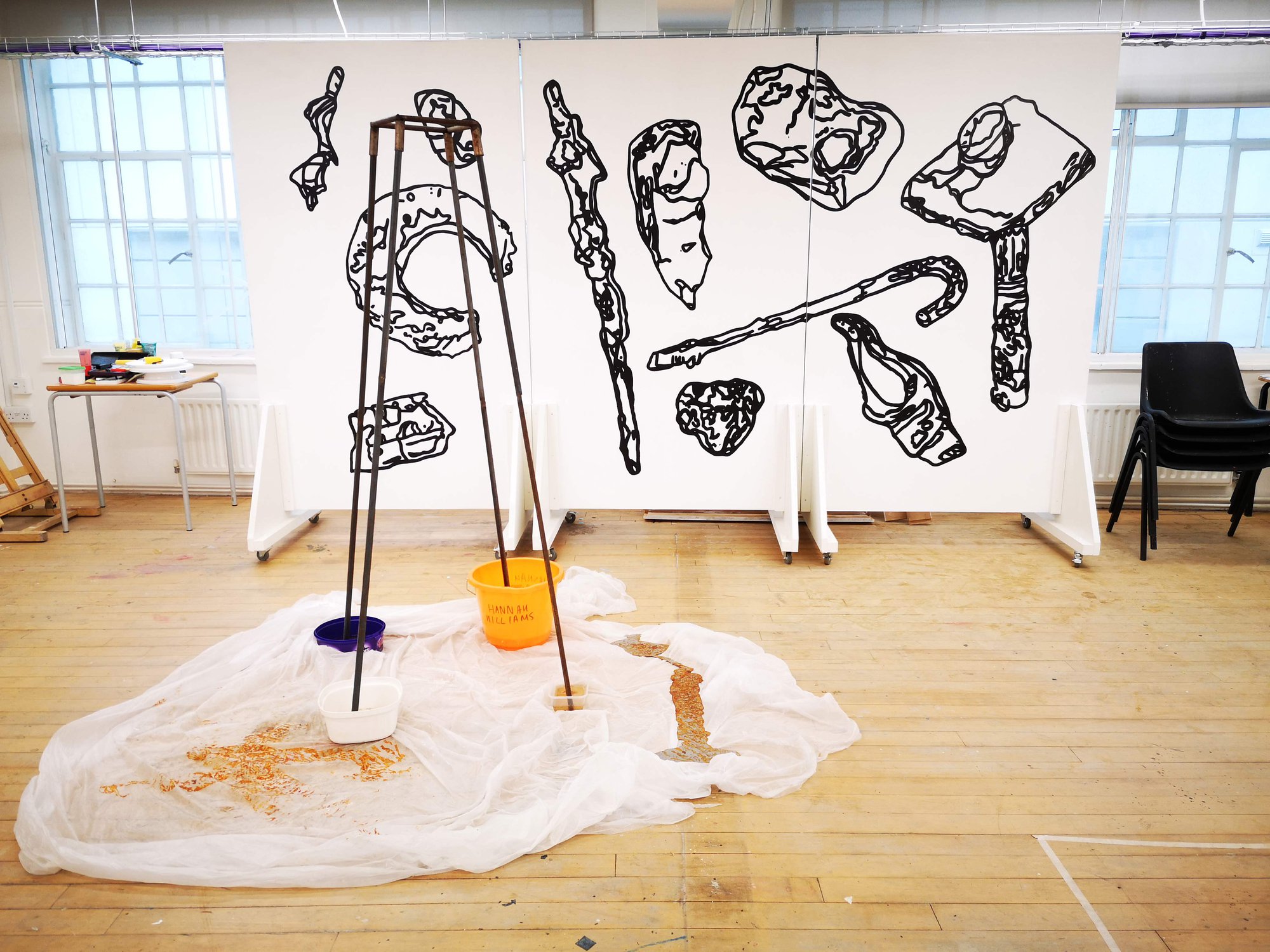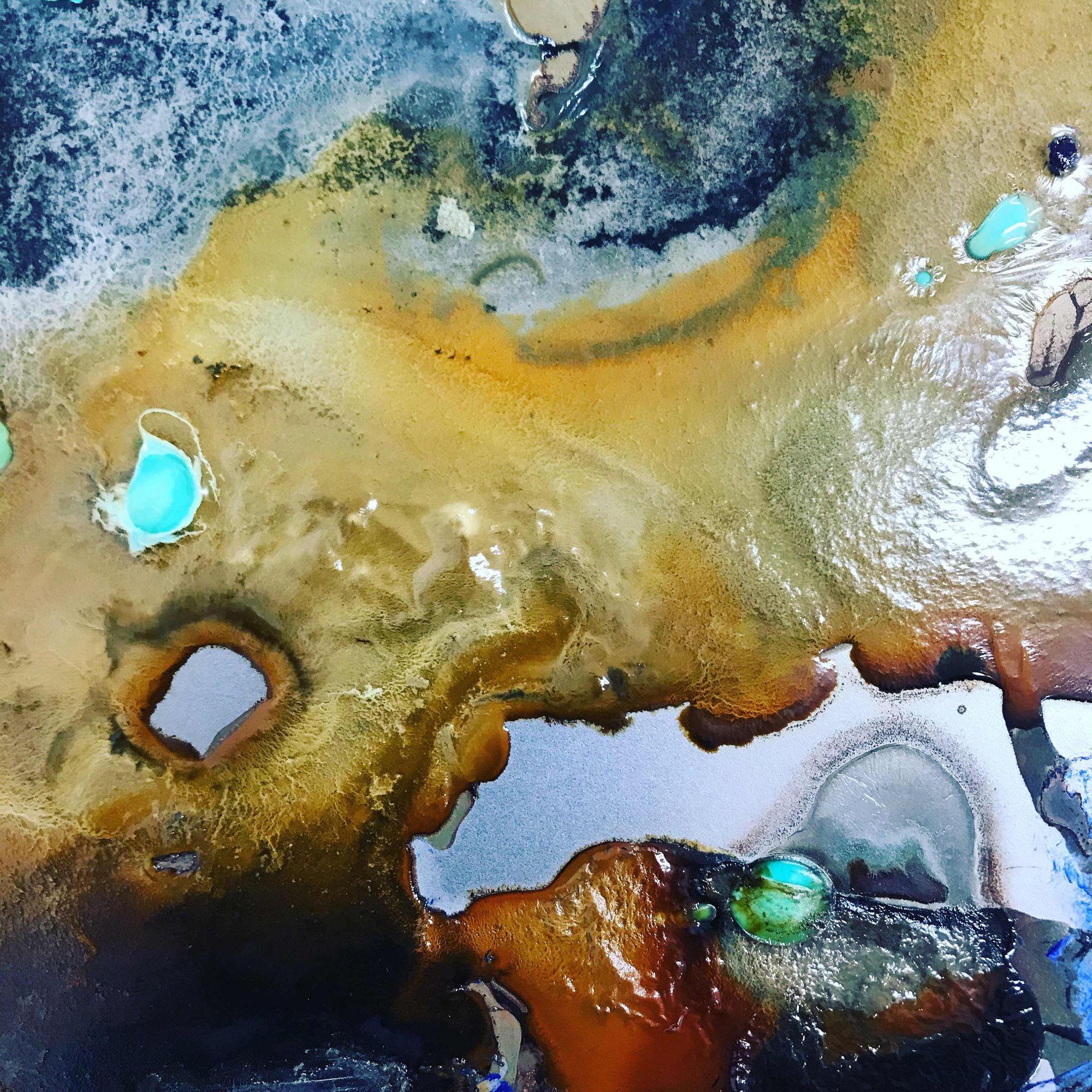Studio 4
The Thingy World
Liveness 2020 (Archive)

Hannah Williams, studio view of Mild Steel Sculpture with Painted Line Drawings (2020). More from Hannah Williams →
‘Habitualization devours works, clothes, furniture, one's wife and the fear of war. “If the whole complex lives of many people go on unconsciously, then such lives are as if they had never been.” And art exists that one may recover the sensation of life; it exists to make one feel things, to make the stone stony.‘
Viktor Shklovsky, Art as Technique
The critic Viktor Shklovsky’s striking words a few months before the Russian revolution over 100 years ago were against the attrition of routine. He wished to reanimate what he thought he'd become too used to. Technique, device and the medium-specific in art were to be the methods: tactics to retrieve what he considered to be 'consciousness'. Well, it certainly came his way in October 1917.
Back in 1920s Europe, this idea of making the stone 'stony' sat very well with what others in the arts thought, too: German playwrights, Irish novelists and anglophile American poets, in particular. The ‘stony stone’ idea lies at the very corner of Russian formalism, almost a hundred years old now and so in a conventional way a modernist antique itself, quoted, loved and fetishised in subject readers, journal articles and studio outlines like this.

Heidi Baines, Jorge II. More →
In fact, a century later, we locate much art now in an opposite way – alive exactly in the everyday, on the unnoticed margins of spectacle and sensation, temporary, jumbled and quiet. In what Iris Murdoch once called "the thingy world", objects must be allowed to have "all a life and being of their own, and friendliness, and rights". It's in such a spirit of companionship that the Thingy World studio acknowledges how our relationship with objects alters, once we think of them as things. And that's when the stuff of an art studio (wood, paint, stone, metal and clay) gets a life again, dons its glad rags to sashay back in through an art school’s doors.
Preeti Shannon Tak, Life in the Decay. More →
Bottle, bottly. Lion, liony. Air, airy.
To be clear, this studio has been all for making things via their adjectives. Bottle, bottly. Lion, liony. Air, airy. Didn't have to be material. That's how art might still recover the sensation of life from what we're all too used to... We did not insist that a student chipped away at any block, although they all had the opportunity at some point. No, we examined art strategies for allowing ‘things’ a life and being of their own. Whimsical, trivial, deadly serious.
We explored objets d’art, the everyday, live art and group work along the way. Art projects were proposed for the whole year, arising from or intersecting with the studio theme, set out with aim and purpose, researched to university standards, using London as a study resource – its galleries, museums, libraries, art events and art archives.

Leandro Vitor, Untitled. See more →
Above all, we worked as artists on making friends with ‘things’, outlining what rights a ‘thing’ might have, using our own interest in their context, their placement and their processes to make artworks with and from them. Knowing how to do this well is crucial to so many artists' careers as professionals. Our art methodology was fairly simple. We started on the ground with some questions about aim and purpose. We set ourselves rules. We conducted field research. We made in all art media. We published our findings to each other.
And displayed our art together.
Layan Harman, Glimmering Thicket at the Steamship Project Space, London, February 2020. More →
- Rosemarie McGoldrick
- Olga Koroleva
- Jessie Flood-Paddock
- Heidi Baines
- Yasmin Braunhofer
- Klaudia Chara
- David Hopkins
- Paola Martella
- Eloise Tery-Lewis
- Leandro Vitor
- Jaymie Bean
- Tegan Hamid Southam
- Layan Harman
- Ruth Stone
- Preeti Tak
- Emma Vann
- Hannah Williams